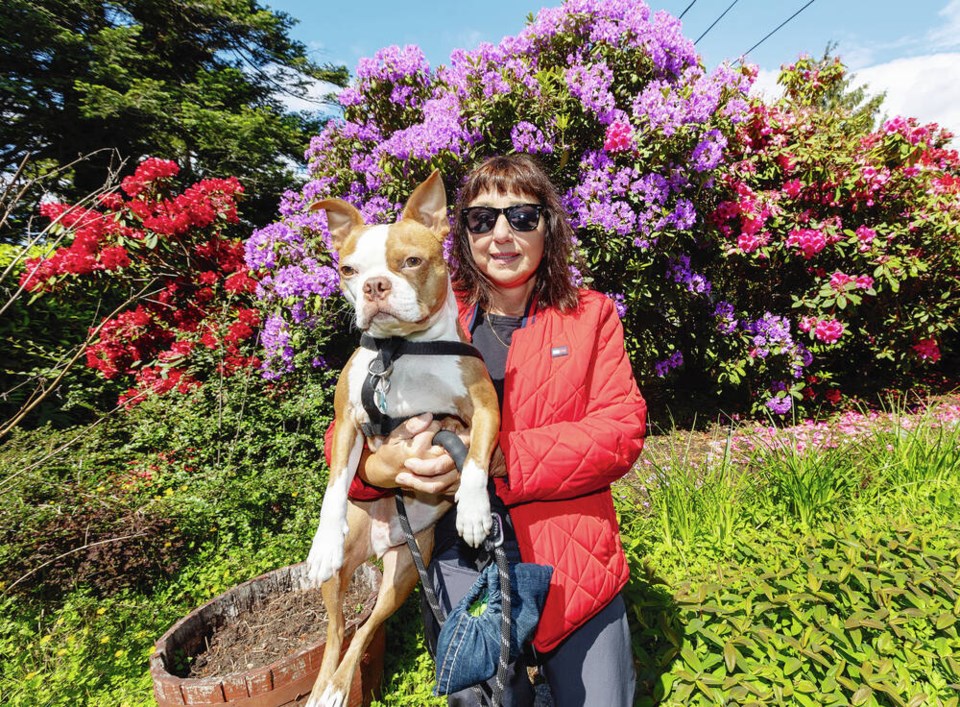Leanne Adkin and her dog Ace have been dodging an aggressive deer in Esquimalt on their walks in recent days, including one encounter where they had to seek shelter behind a parked vehicle.
The doe, which has a fawn with it, has been hanging out near the corner of Plaskett Place and Munro Street, not far from Saxe Point Park and steps from Adkin’s home.
Adkin said she thinks that Ace, a Boston terrier, has been the deer’s primary target.
She said she had three encounters with the deer, which was tagged, on consecutive days. “In the second one, the deer chased me right out into the intersection at Munro.”
The third incident was the scariest, Adkin said. “She came right at me and I picked up the dog, and I had to run behind a van and hide,” she said. “She came running around the back of the van to try to get me.”
The deer backed off enough each time to let Adkin and Ace get home safely.
Adkin said she has heard from neighbours who have had encounters with the same deer.
Gabriela De Romeri, spokesperson for the wildlife education group WildSafeBC, said adult deer can be very defensive around their offspring during fawning season, which peaks at this time of year.
“Dogs can be seen as a threat, especially if there are fawns,” said De Romeri. “Dogs have been stomped and kicked and injured.”
During fawning season in Oak Bay in 2016, a deer knocked a cyclist to the ground.
Awareness of the presence of fawns and their protective parents is a big part of avoiding injury from an attack, De Romeri said.
“A lot of people don’t realize that deer can cause damage and that they will protect something that matters to them, like a fawn.”
Keeping dogs on leash lessens the chances of riling a deer by allowing it to have some space, she said. “If you do spot a deer, always give them space, plenty of space.”
That can mean detouring from your walking or hiking route if need be, De Romeri said.
She said making noise while outside can also help. “Sometimes it gives a deer the chance to leave the area.”
De Romeri stressed the importance of staying away from fawns that appear to have been left on their own, which is a common occurrence.
“Typically, the mom will stash the fawn somewhere safe and leave and go feed for multiple hours,” she said. “You don’t want to disturb the fawn in that window of time.”
If the mother picks up the smell left by a human interaction, she might decide to abandon the fawn, De Romeri said.
In 2021, Esquimalt took part in a deer-management study with the Urban Wildlife Stewardship Society that saw 20 deer tagged and 40 does administered a contraceptive vaccine by University of Victoria researchers.
Forty does were also treated with the vaccine in 2022, followed by booster doses in the fall of 2023. A similar contraceptive effort took place in Oak Bay.
>>> To comment on this article, write a letter to the editor: [email protected]



